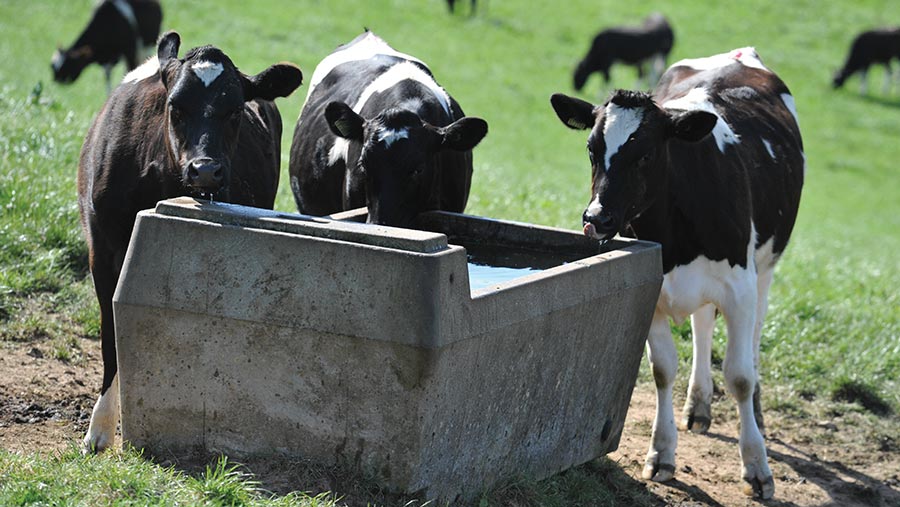Steps to reduce livestock heat stress as temperatures soar
 © Debbie James
© Debbie James As weekend temperatures are expected to soar to 30C in parts of the country, rural insurer NFU Mutual has urged farmers to protect dairy herds against heat stress.
Key research found that 41% of dairy farmers said heat stress is a priority risk for their business, with average loss of production ranging from £24,000-£90,000 depending on herd size.
With the warmer summer months now upon us, key steps to ease the effects of heat stress include ensuring cattle have access to water troughs with suitable water flows, and identifying paddocks with more shade to use on hot days.
See also: Anger as Arla unveils plans for plant-based Lurpak butter
The insurer also recommends a “siesta” management style, where cows graze directly after milking and are housed at around 10am, with buffer feed available to them.
Cows are then sent back out to graze after the afternoon milking to graze until dusk, avoiding the worst of the day’s heat.
Gregor Belcher, farm specialist at NFU Mutual, said: “Heat stress in cows is becoming a major concern for many dairy farmers as summers get hotter.
“These measures can help reduce the negative impact that heat stress can have on welfare and a herd’s productivity.”
Key advice
Short-term actions
- Provide suitable access to water troughs and ensure pipes are in good working order, have no leaks, and that the flow rate to the troughs is sufficient
- Identify paddocks that have greater shade availability and use these on hot days
- When buffer feeding, add suitable feed additives to ensure cattle are receiving peak nutrition to support rumen health function
Medium-term actions
- Implement “siesta” management where appropriate – this technique involves cows grazing directly after milking and then being housed at about 10am, with buffer feed available to them. Cows are then sent back out after afternoon milking to graze until dusk
- Install greater numbers of water troughs in key locations so that cows are never more than 100m away from a clean water source
- Adjust milking times to coincide with the cooler periods of the day
- Install shade and fans in holding yards and cow sheds
Long-term actions
- Review breeding plans to focus on genetic strains that have greater heat tolerance levels
